
The Estate - Bevendean History Project

Archaeological Dig at Farm Green, Bevendean June 2025People and children from the
local area participated in an archaeological dig to uncover a portion
of the farm which was originally on Farm Green. The earliest
reference to a farm at Bevendean is from the Domesday Book of 1086.
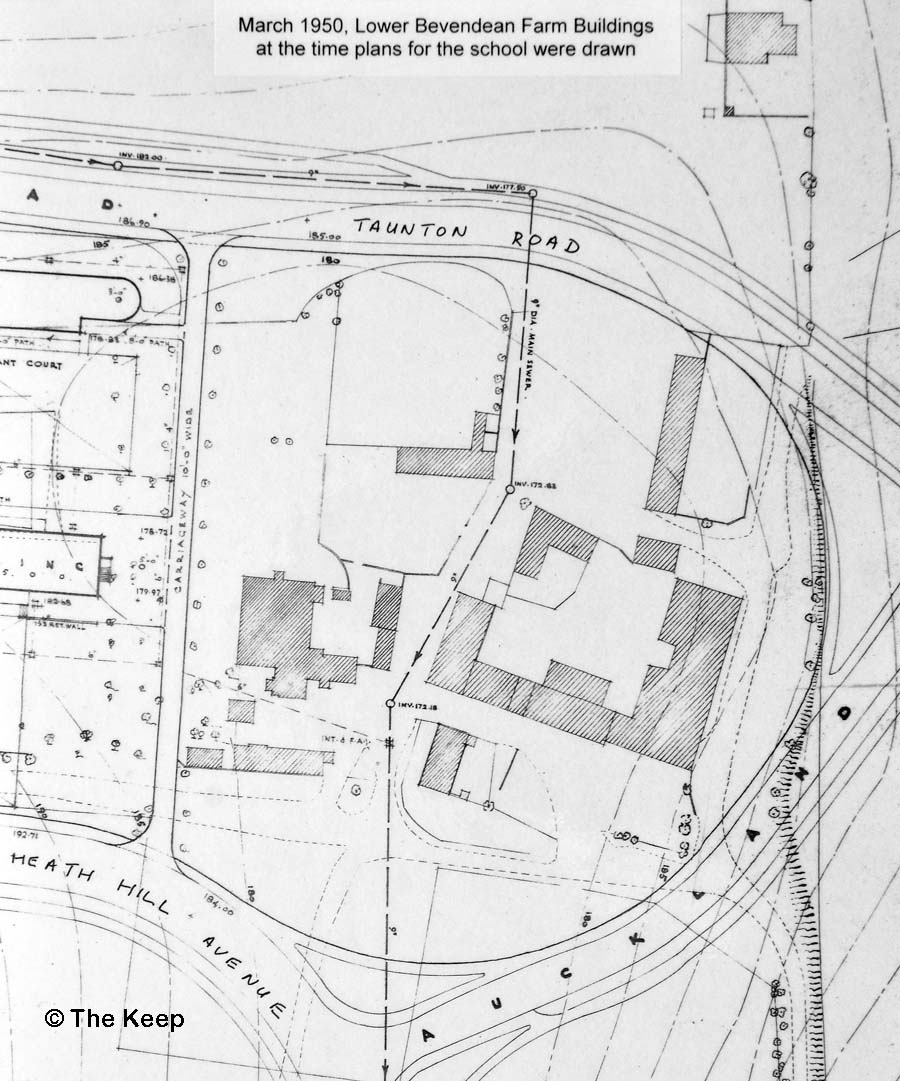
Plan showing outline of original farm building in March 1950 when the plans for Lower Bevendean School were drawn up. Keep Reference: R/C/33/37.
The aim was to build of the results of a geophysical survey carried out in October 2019, the plans of the farm buildings in 1950 and a sketch plan drawn by Norman Allcorn who lived on the farm from 1932 to 1942.
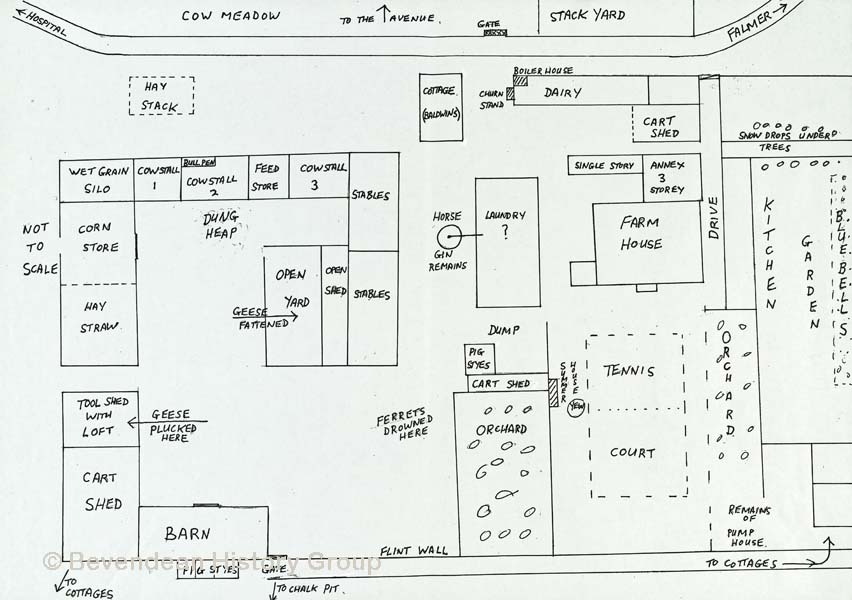
Norman sketch plan drawn in 2014.
Reference: 1940c_Bevendean_Farm_Plan_N_Allcorn
The week-long archaeological community project took place in June 2025, in an area southwest of Bevendean Primary School, formerly the site of Lower Bevendean Farm. Four small trenches were dug over different buildings during the week.
The excavation work was funded by the National Trust’s Changing Chalk Community Grants Scheme.
Marking out the areas which are to be investigated.
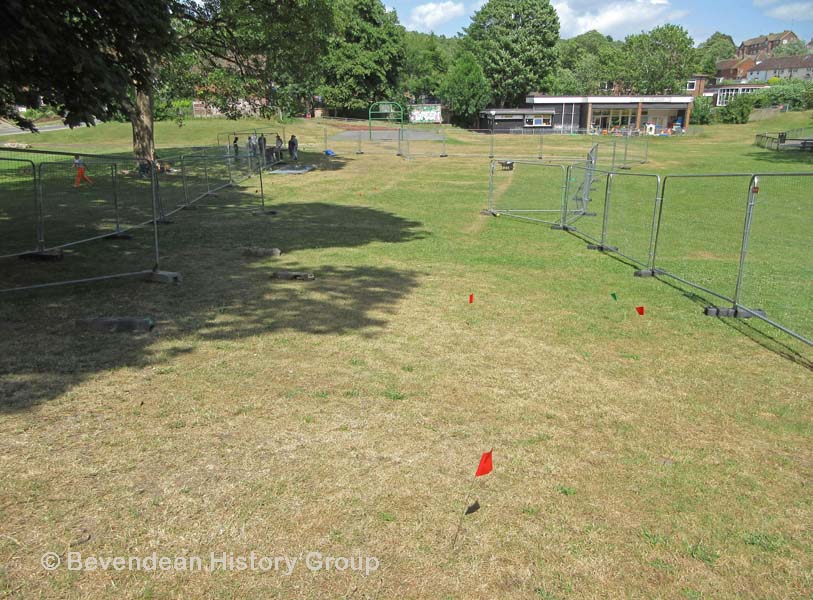
Reference: 2025-06-23_IMG_1691c
Archaeological excavation involved the carefully digging into the earth to uncover, examine, and record buried material remains, artifacts, and features of past human life.
Recording the work as the dig progresses, looking for the wall of one of the large farm barns.
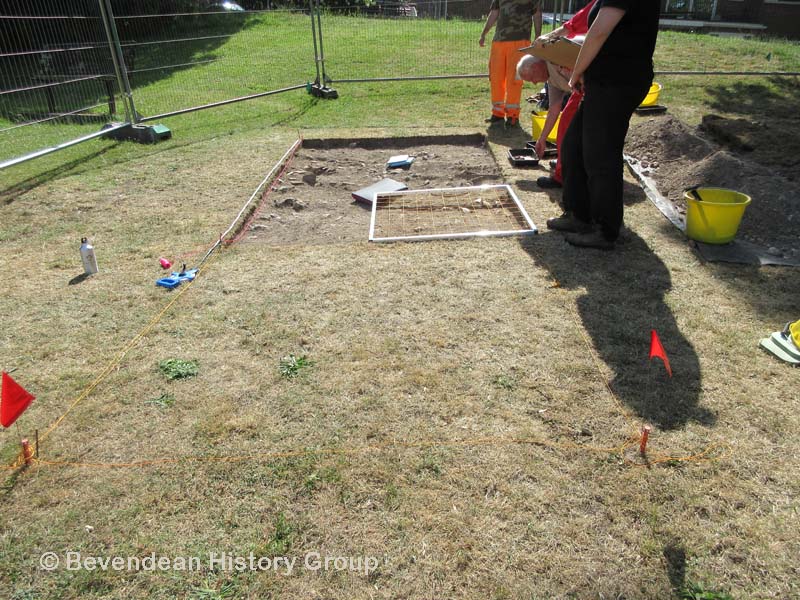
Reference: 2025-06-25_IMG_1733
The final day of digging revealed a wall of flint the inside of which was rendered while the outer surface was rough stone. This is possibly part of the back wall of the wet grain silo.
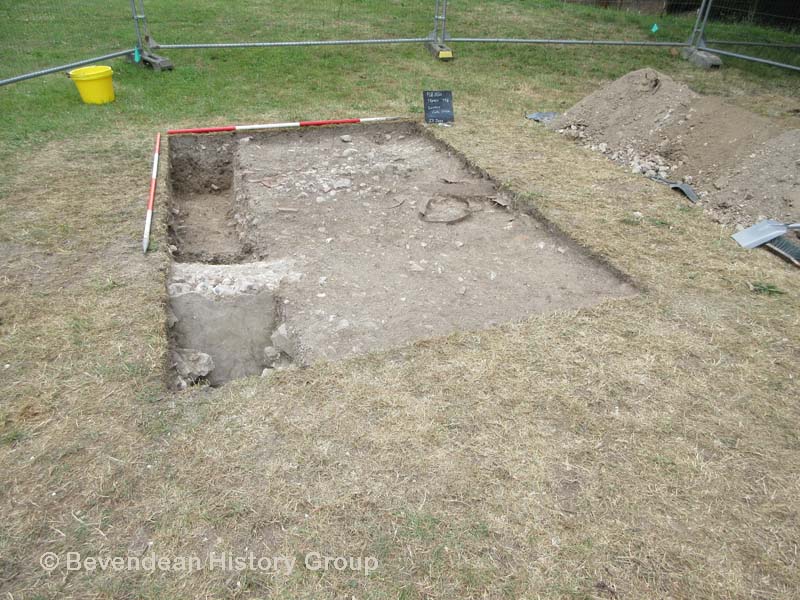
Reference: 2025-06-25_IMG_1818.
The site director was Peter Tolhurst and the project was led by Felicity Thompson and Gemma Ward of Brighton Young Archaeologists’ Club, along with members of Brighton & Hove Archaeological Society and Bevendean History Group.
A trench dug over one of the horse stables showing the remains of a wall and a cobbled floor.
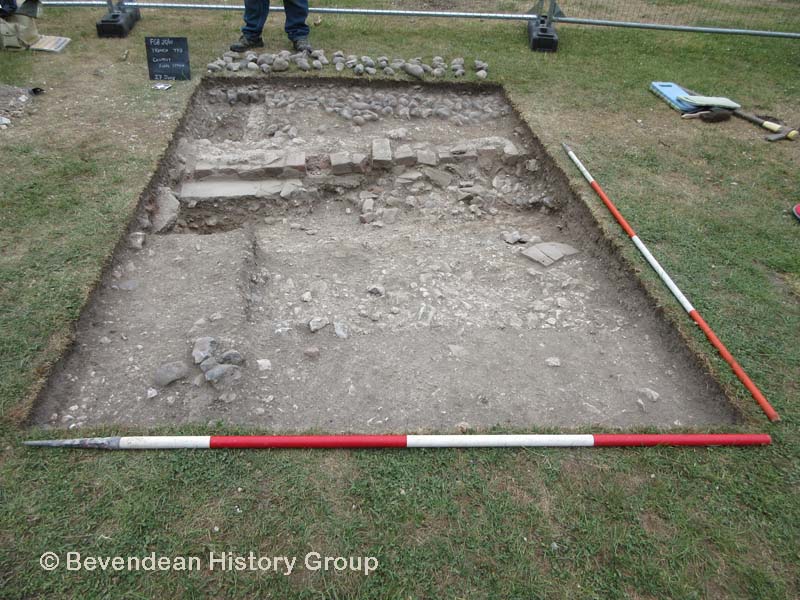
Reference: 2025-06-27_IMG_1802.
The children spent their time digging in what was the site of the Carters Cottage. The children found a small wall and a paved area in one corner.
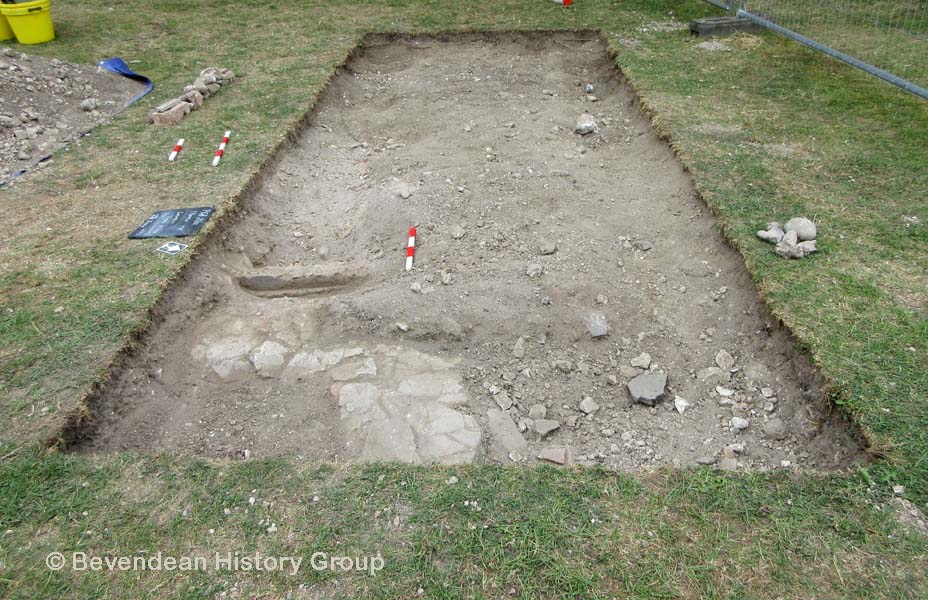
Reference: 2025-06-28_IMG_1877c
Grace Walker, project manager at Changing Chalk, said: “The excavation is a fantastic opportunity for residents to collaborate with archaeologists and local historians, delving into the past to unearth the rich history of the area and its inhabitants.
The excavation concludes with an Open Day on Saturday 28 June at the park in Farm Green, when approximately 300 visitors were able to enjoy the displays, ask questions, take part in dancing and listed to a band. There was also an opportunity to visit local stalls.
People looking at the Bevendean History Groups display boards, reading transcripts of Mrs Allcorn’s recipes and asking questions.
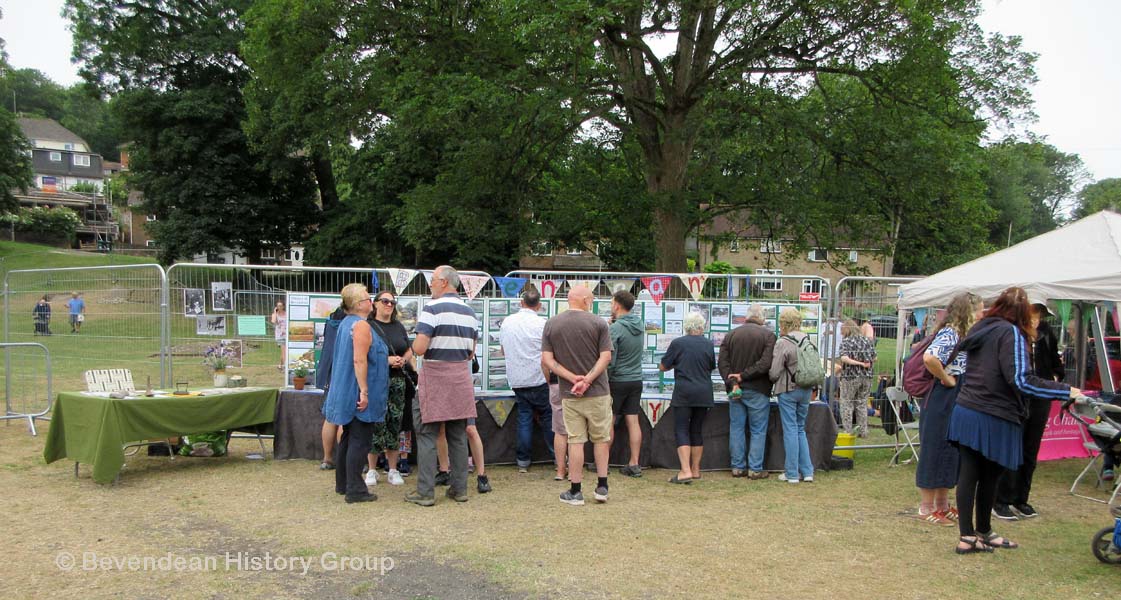
Reference: 2025-06-28_IMG_1820c
Three of the finds trays containing metal items including nails and a few coins, fragments of glass, pottery and roof tiles.
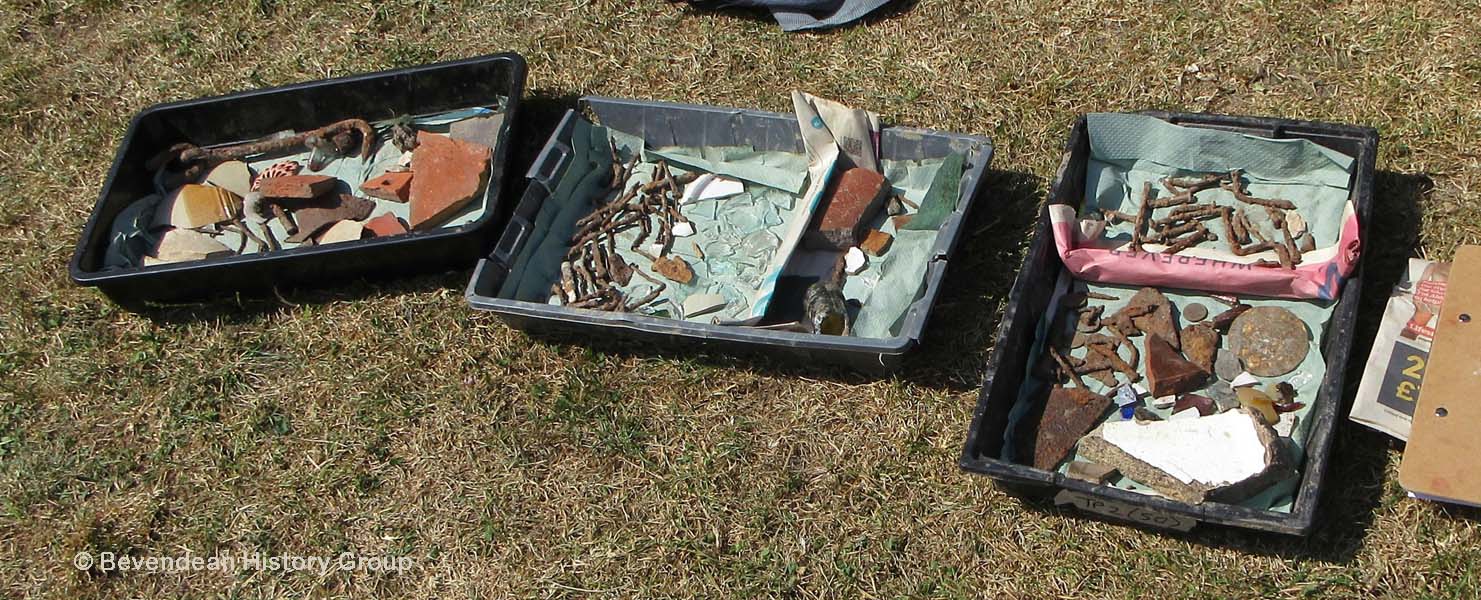
Reference: 2025-06-25_IMG_1743c
A hand-held grinding stone was also found in one of the trenches.
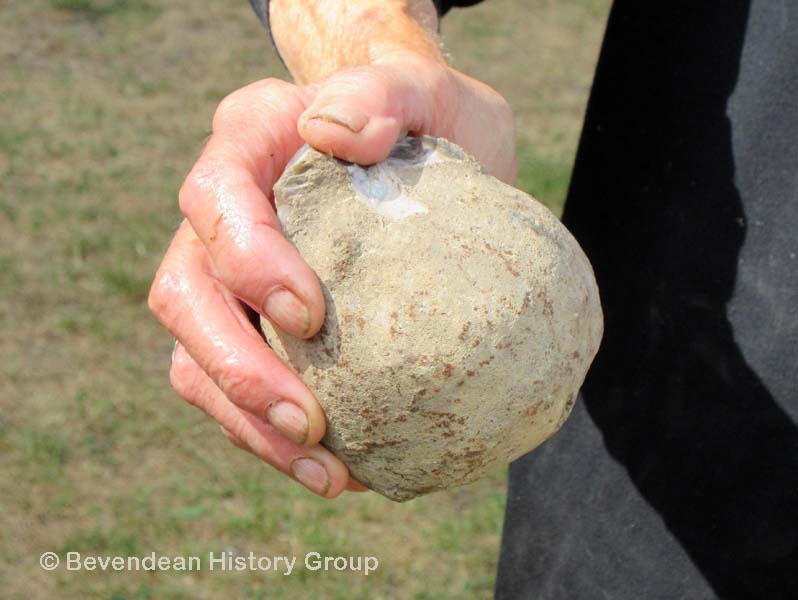
Reference: 2025-06-26_IMG_1792c
A full photographic record was made of the project including images taken by a drone. Specialist reports of any artefacts recovered will be published later.
Norman Allcorn who lived on the farm from 1932 to 1942 visited the dig twice and gave valuable information on the siting of the farm building to the dig team.
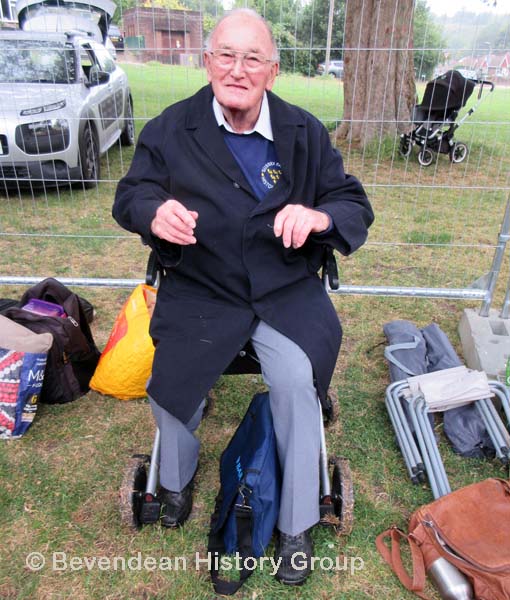
Reference: 2025-06-26_IMG_1761c
The team of diggers at the end of the week.
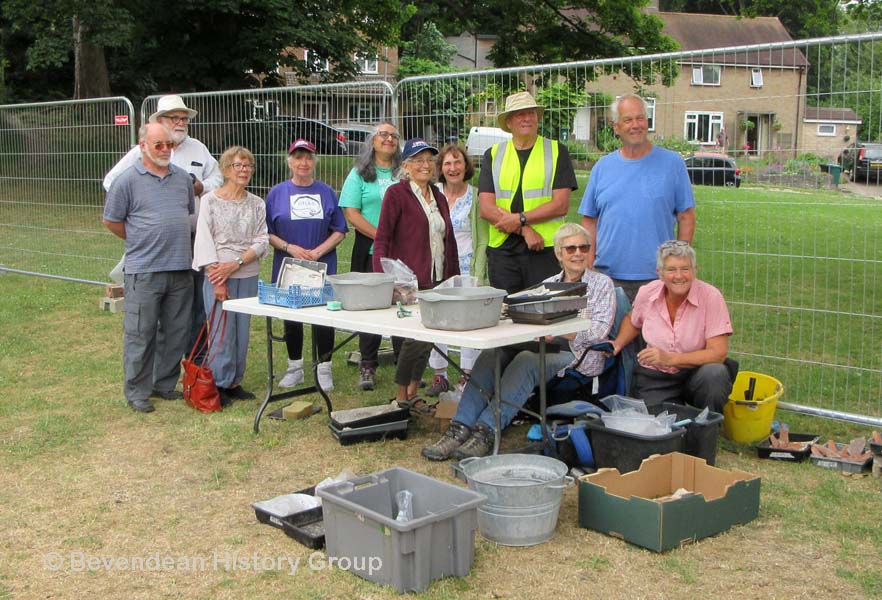
Reference: 2025-06-28_IMG_1851c
A report on the results of the fieldwork should be available within three to four months after the end of the community project on Saturday 29 June 2025.

Plan showing outline of original farm building in March 1950 when the plans for Lower Bevendean School were drawn up. Keep Reference: R/C/33/37.
The aim was to build of the results of a geophysical survey carried out in October 2019, the plans of the farm buildings in 1950 and a sketch plan drawn by Norman Allcorn who lived on the farm from 1932 to 1942.

Norman sketch plan drawn in 2014.
Reference: 1940c_Bevendean_Farm_Plan_N_Allcorn
The week-long archaeological community project took place in June 2025, in an area southwest of Bevendean Primary School, formerly the site of Lower Bevendean Farm. Four small trenches were dug over different buildings during the week.
The excavation work was funded by the National Trust’s Changing Chalk Community Grants Scheme.
Marking out the areas which are to be investigated.

Reference: 2025-06-23_IMG_1691c
Archaeological excavation involved the carefully digging into the earth to uncover, examine, and record buried material remains, artifacts, and features of past human life.
Recording the work as the dig progresses, looking for the wall of one of the large farm barns.

Reference: 2025-06-25_IMG_1733
The final day of digging revealed a wall of flint the inside of which was rendered while the outer surface was rough stone. This is possibly part of the back wall of the wet grain silo.

Reference: 2025-06-25_IMG_1818.
The site director was Peter Tolhurst and the project was led by Felicity Thompson and Gemma Ward of Brighton Young Archaeologists’ Club, along with members of Brighton & Hove Archaeological Society and Bevendean History Group.
A trench dug over one of the horse stables showing the remains of a wall and a cobbled floor.

Reference: 2025-06-27_IMG_1802.
The children spent their time digging in what was the site of the Carters Cottage. The children found a small wall and a paved area in one corner.

Reference: 2025-06-28_IMG_1877c
Grace Walker, project manager at Changing Chalk, said: “The excavation is a fantastic opportunity for residents to collaborate with archaeologists and local historians, delving into the past to unearth the rich history of the area and its inhabitants.
The excavation concludes with an Open Day on Saturday 28 June at the park in Farm Green, when approximately 300 visitors were able to enjoy the displays, ask questions, take part in dancing and listed to a band. There was also an opportunity to visit local stalls.
People looking at the Bevendean History Groups display boards, reading transcripts of Mrs Allcorn’s recipes and asking questions.

Reference: 2025-06-28_IMG_1820c
Three of the finds trays containing metal items including nails and a few coins, fragments of glass, pottery and roof tiles.

Reference: 2025-06-25_IMG_1743c
A hand-held grinding stone was also found in one of the trenches.

Reference: 2025-06-26_IMG_1792c
A full photographic record was made of the project including images taken by a drone. Specialist reports of any artefacts recovered will be published later.
Norman Allcorn who lived on the farm from 1932 to 1942 visited the dig twice and gave valuable information on the siting of the farm building to the dig team.

Reference: 2025-06-26_IMG_1761c
The team of diggers at the end of the week.

Reference: 2025-06-28_IMG_1851c
A report on the results of the fieldwork should be available within three to four months after the end of the community project on Saturday 29 June 2025.
